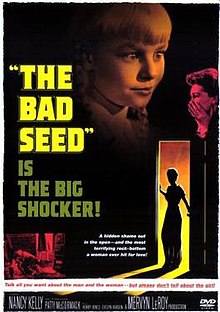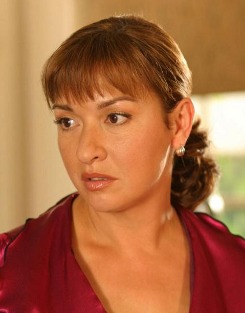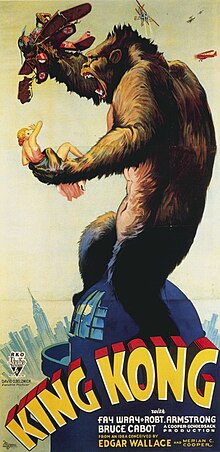Today, I look at the age in horror cinema where giant monsters and human killers were the most popular choices for your movie villains. Sorry it's been a while since the last entry, but I've been very busy lately and I'm going to try and post more frequently over the weekend.
Criteria:
Horror film or film with horror elements
Made between 1950 and 1959
If you don't see an entry you wanted to see, check out my list of best giant monster movies from last year:
http://mattcottermovies.blogspot.com/2013/10/top-10-giant-monster-movies.html
A little backstory....
After the atom bomb was dropped in Hiroshima, Japan, the world changed. People began to really fear the dangers of atomic science and its' destructive capabilities. Two major cities in Japan were in ruins, with dangerous radioactive energy left over, and lives destroyed. This horrific aftermath eventually inspired one of the most famous monsters in all of world cinema: Godzilla. But I'll cover that later.
The trend of giant, radioactive beasts attacking cities eventually caught on in the States, and soon giant monster movies and creature features began to become huge hits with audiences. Drive-in theaters and traditional cinemas alike showed posters advertising films as the "most amazing picture ever produced" or "a terrifying adventure through space". Usually released in double bills, these films were often cheaply produced, featuring no-name actors and thinly constructed plots, and usually tried to show the monster sparingly to save money. While it was devised as a way for the greedy producers to spend as little money as possible, the act of not showing the monster that much actually helped to build a sense of mystery and bring tension to the film, and made finally getting to see the monster feel more earned, like it's the pay off of the film. And despite being cheap and poorly acted for the most part, there's still a certain charm to these films and the genre as a whole, and they're just fun films to watch.
While giant insects and radioactive lizards may have dominated the public consciousness, another type of film was gaining popularity with critics and award shows: the domestic thriller, which is a type of thriller that hits home by literally being set at home. The subgenre focuses on the average American family, usually in white suburbia, being corrupted or invaded by an outside force: not a supernatural one, but a human one. These films usually had human villains, typically serial killers and psychopaths, which made them feel more real and grounded, and therefore more terrifying. Despite some of these films feeling a little over-the-top nowadays, at the time they were on the cutting edge of the thriller genre, and some were quite controversial.
The List:
15.
The Tingler (1959): Definitely the best of the William Castle gimmick films, this stars the legendary Vincent Price. He is a pathologist who discovers there is a parasitic creature dubbed "The Tingler" that lives in the spine of every human. It is what causes the tingling spine sensation people feel when frightened, and that feeling actually is the Tingler feeding on humans and killing them. Luckily, humans are built with a defense mechanism: screaming. The pathologist then decides to try an experiment on fear with a mute woman. This film was extremely innovative as far as gimmicks go, although it's kind of dated now. Castle had live actors scream out in the theater and pretend to faint and be carted out by nurses; and he put vibrators in the backs of seats during a sequence when the Tingler "gets loose" inside the theater. Not to mention the actually really innovative and kind of trippy color sequence that was probably kind of terrifying for the time.

14.
The Fly (1958): In this adaptation of George Langelaan's short story, Vincent Price plays a man whose scientist brother Andre (David Hedison) has recently been found murdered: his head and arm crushed in a hydraulic press machine. His wife (Patricia Owens) confesses, but refuses to say why she did it, and is obsessed with finding a white-headed fly. Price eventually gets her to reveal the truth of why Andre died: it involved Andre's attempts to use a new teleportation device he has created and a common house fly. I won't go into much more detail because it would ruin the film's various reveals. Even though it's kind of dated and its' special effects cheap-looking, it's still a cool classic film that is a lot smarter than you would expect.

13.
House of Wax (1953): Yet another Vincent Price film. This time, he plays a genius sculptor who is horribly burned in a fire caused by his business partner, who wanted the insurance money for the building. Now driven insane by his horrifically scarred face and his many masterful creations being destroyed in the fire, he seeks revenge against those who have wronged him, turning them into new wax structures for his "museum". The first 3-D film from a major studio, this is another kind of gimmicky, dated film, but it's still a fun film to watch around Halloween. Also, Price's hulking servant Igor is played by a young, relatively unknown Charles Bronson. Its' one of Price's better movies, so check it out.

12.
Tarantula (1955): One of the better giant monster movies, despite its' misleading poster, this film follows the story of a scientist who tries to create a super food nutrient while experimenting with animals. This eventually leads to one of his test subjects, a tarantula, growing to giant proportions and terrorizing the Arizona countryside. Again, a really dated film, with some obviously cheap ways to save money (i.e. they use the exact same shot type over and over again to show how the Tarantula attacks someone, and they cut away before the person is actually killed, if that sounds confusing, just watch the film and you'll see what I mean), Its' still a fun little B-movie that I would recommend to people who love giant insect attack movies.

11.
The Bad Seed (1956): Taking a more realistic tone than most of films of the time, Mervyn LeRoy's chilling thriller is a faithful adaptation of Maxwell Anderson's successful stage play, which was in itself an adaptation of William March's novel. One of the better creepy kid movies, it was nominated for several Oscars (including Patty McCormack for her eerie performance as the lead girl), and was the subject of controversy for changing the dark ending. (SPOILERS) In the original novel and play, the mother dies and the evil girl (McCormack) survives. The Hays Code did not like this and had them reverse the characters' fates. The producers also had to put the "Adults Only" tag on the film's posters and ads, as there was no "R" rating at the time. Although the good ending kind of ruin's the film's overall tone, it's still a really well-done horror film that stands the test of time.

10.
The Thing From Another World (1951): This RKO film is based on the pulp novel "Who Goes There?" by John W. Campbell, about a shapeshifting alien crash-landing in the Antarctic. The film changes many things: for one, the creature in this film does not shapeshift, and the film takes place in the Arctic instead. However, that doesn't make the film any less effective. In fact, this film is very smart and well-acted, and the ending line "Keep watching the skies!" is very ominous and memorable. This film influenced many filmmakers, none more than John Carpenter, who had the film playing on TV in his film
Halloween, and later remade the film as
The Thing in 1982, which was closer to the book and slower-paced, but equally timeless. You can tell this film was appreciated by Carpenter, and I think anyone who sees it can recognize it has a certain charm to it and was obviously really impactful for the time. It was also interesting to see producer Howard Hawks, known more for comedies and adventure films, producing a sci-fi/horror film.

9.
The Night of the Hunter (1955): This dark and tense thriller stars Robert Mitchum in one of his creepiest roles as a man who marries into a family and slowly takes control of it to get their buried fortune inside the family's basement. One of the most famous thrillers of all time, it has some surreal imagery that sticks with you, such as Mitchum's creepy fist tattoos which read "Love" and "Hate". This film was preserved by Congress for a reason: it's influential, timeless, was shocking at the time, and the lead performance is still kind of unsettling.

8.
Them! (1954): The first and arguably best of the giant insect films, this was a huge hit with audiences at the time, and it even won an Oscar for its' special effects and a Golden Reel Award for sound editing. One of the most influential and well-structured films of the 50's, it follows a standard police investigation into several disappearances, which later spirals into a story of giant ants attack the general population. I would say that anyone interested in 1950's science fiction or horror should see this one at least once.

7.
The Curse of Frankenstein (1957): The film that kickstarted "Hammer Horror" re-established Gothic horror as a prominent subgenre. Directed by Terence Fisher and starring Hammer mainstays Peter Cushing and Christopher Lee, two of the most bad-ass actors of all time. Seriously, look up what Christopher Lee has accomplished in his life. A darker and more true-to-the-book Frankenstein story, Cushing portrays Dr. Frankenstein as more of an obsessive, violent psychopath who will stop at nothing to complete his experiments and will kill off anyone who stands in his way. Christopher Lee stars as the mute, disfigured monster, and portrays him as more of a bloodthirsty animal than Boris Karloff did (Karloff's was far more sympathetic). This was also Hammer's first color horror film, and its' success led to Hammer becoming a major studio.

6.
The Beast from 20,000 Fathoms (1953): A classic monster film based on the Ray Bradbury short story with some great stop-motion effects from the legendary Ray Harryhausen, this movie has a lot of iconic imagery, and created a lot of giant monster tropes. It was one of the first atomic monster films, even predating the Godzilla franchise. Inspiring countless other films, such as the recent films
Cloverfield and
The Host, and revolutionizing special effects, this is one film that needs to be seen by any movie fan.

5.
The Blob (1958): While a laughable concept, this movie's execution of its' material is so charming and genuine and fun that it's hard not to like it one some level. It's got everything good about 1950's sci-fi, and stars a young Steve McQueen, who steals the show as the leading man. The film is so ingrained in pop culture as this classic that the small town in Pennsylvania in which it was filmed (Phoenixville, PA) celebrates a Blobfest each year. I can relate to that as my home town in California holds an
American Graffiti car show each year due to the fact that the George Lucas film was primarily shot there, and many other films as well. It's just such a nostalgic film and pretty inspiring, as it was produced independently in a small town but still enjoyed great success and shot Steve McQueen to stardom. The icing on the cake is the cheesy opening song by "The Five Blobs" which is a bit of an earworm.

4.
Les Diaboliques (or
Diabolique; 1955): This black-and-white psychological thriller focuses on an abusive and mean-spirited school headmaster, whose wife and mistress team to murder. Unfortunately, after the murder is said and done, the man's body goes missing, and later strange things begin occurring, and the two women begin thinking the man is back to haunt them. The performances by the lead actresses Simone Signoret and Vera Clouzot are remarkable, and the movie has a really tense and creepy atmosphere, but also feels grounded in reality, making it all the more terrifying. It also has one of the best twist endings in all of cinema.

3.
Horror of Dracula (or
Dracula; 1958): Hammer's best horror films is their follow-up to
Curse of Frankenstein. Terence Fisher again directs. Christopher Lee stars as Dracula, who is more violent and more sinister than Bela Lugosi's portrayal. Peter Cushing now plays Professor Van Helsing, the film's hero. Michael Gough (later cast as Alfred in Tim Burton's
Batman) appears as well. With lavish and colorful costumes and sets, and vibrant red blood, this Dracula story is more violent, more sexually explicit, and more true to the novel than the 1931 Universal version. Definitely Hammer's best effort.

2.
Invasion of the Body Snatchers (1956): Don Siegel's adaptation of Jack Finney's novel of the same name is one of the most influential and iconic sci-fi/horror films of all time. Kevin McCarthy gives a profound lead performance as a man consumed by paranoia, as he believes the Earth is being infested by shape-shifting pod people. In fact, the term pod people was popularized by the film. One of the most remade science fiction films ever (there was a 1978 remake, a 1993 remake, a 2007 remake, and the 1998 film
The Faculty is obviously inspired by it), its' an intense and mind-bending alien thriller that plays with your head, and actually has a kind of ominous and foreboding ending, even though its' implied that the authorities will stop the invasion. The scene where McCarthy helplessly exclaims "They're Already Here! You're Next!" is now a staple of pop culture. It's a timeless and eerie classic of the genre and everyone needs to see it at least once.

1.
Gojira (or
Godzilla, King of the Monsters; 1954): This Japanese monster film wound up spawning countless sequel and spin-offs, including a few American remakes/reboots (one successful, one not), and became one of the most iconic Japanese films ever. Inspired by the aftermath of Hiroshima, the original Japanese cut of this film is much darker and more upsetting than the edited America cut, which is a lot more kid-friendly and has an American actor (Raymond Burr, playing a character named Steve Martin) awkwardly edited in. The American version, while worth seeing, is nothing compared to the original Japanese cut. Undoubtedly the most iconic of any of the films on this list,
Gojira should be respected as the greatest atomic monster film ever made.


(Images: Wikipedia)
Runner-ups:
The Beginning of the End, 20 Million Miles to Earth, The Quartermass Xperiment, Fiend Without a Face, House on Haunted Hill, It!- The Terror From Beyond Space
 (Image: Wikipedia)
(Image: Wikipedia)















 (Images: Wikipedia)
(Images: Wikipedia) (Image: nndb.com)
(Image: nndb.com)




 (Images: Wikipedia)
(Images: Wikipedia)










